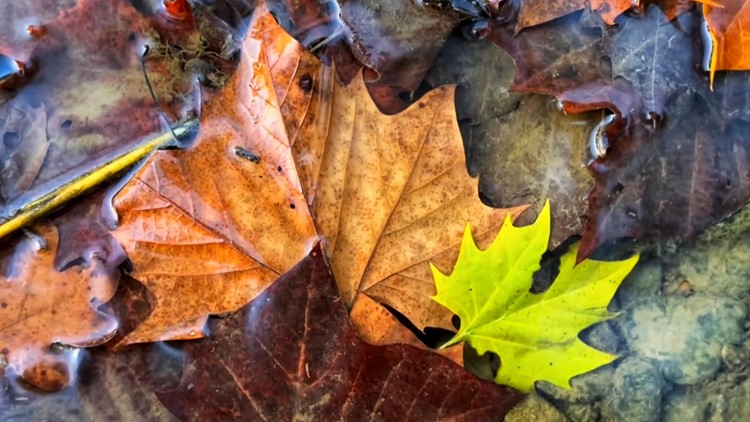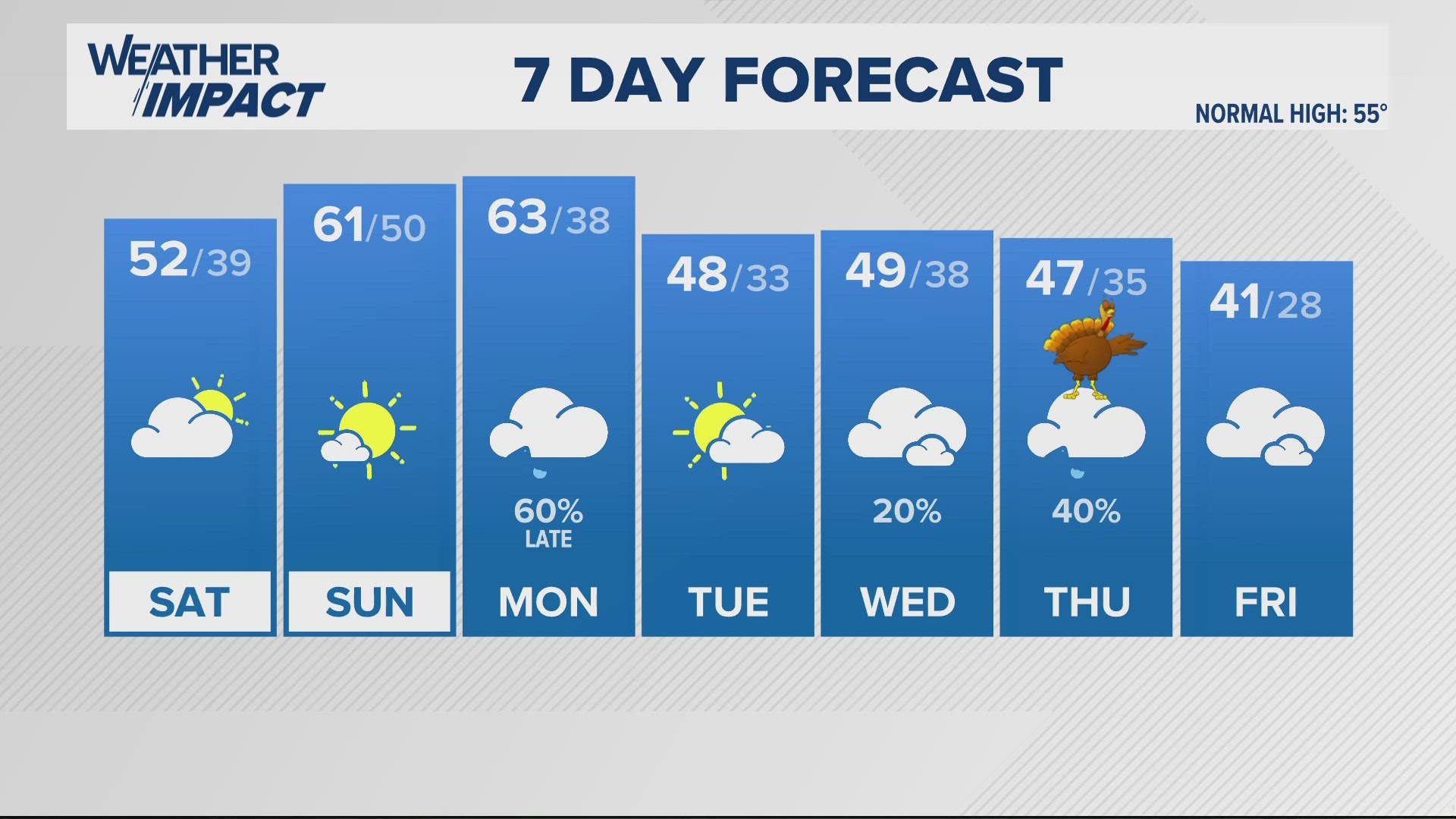LOUISVILLE, Ky. — Autumn is right around the corner beginning with the autumnal equinox, at 8:43 a.m., Sunday, Sept. 22. "Equinox" meaning equal day and night, as the sun's rays pass directly over the equator, kicking off the new fall season.


No other season is so appropriately named as we see leaves, acorns, and apples "fall" from the trees, and temperatures steadily drop day by day. We also lose daylight each day, with earlier and earlier sunsets.
Below you will find interesting data covering sunset times, normal first frosts, freezes, snowfalls, and when to expect cooler and cooler temperatures.
The first change we notice as autumn approaches are those earlier sunsets. The new season begins with 7:37 p.m. sunset, falls to 6:54 p.m. a month later, then the BIG change occurs on Nov. 3rd as we set our clocks back an hour, and the sun sets at a much earlier time of 5:40 p.m. The earliest sunsets of the year begin in late fall on Dec. 1st, at 5:22 p.m.
SUNSETS

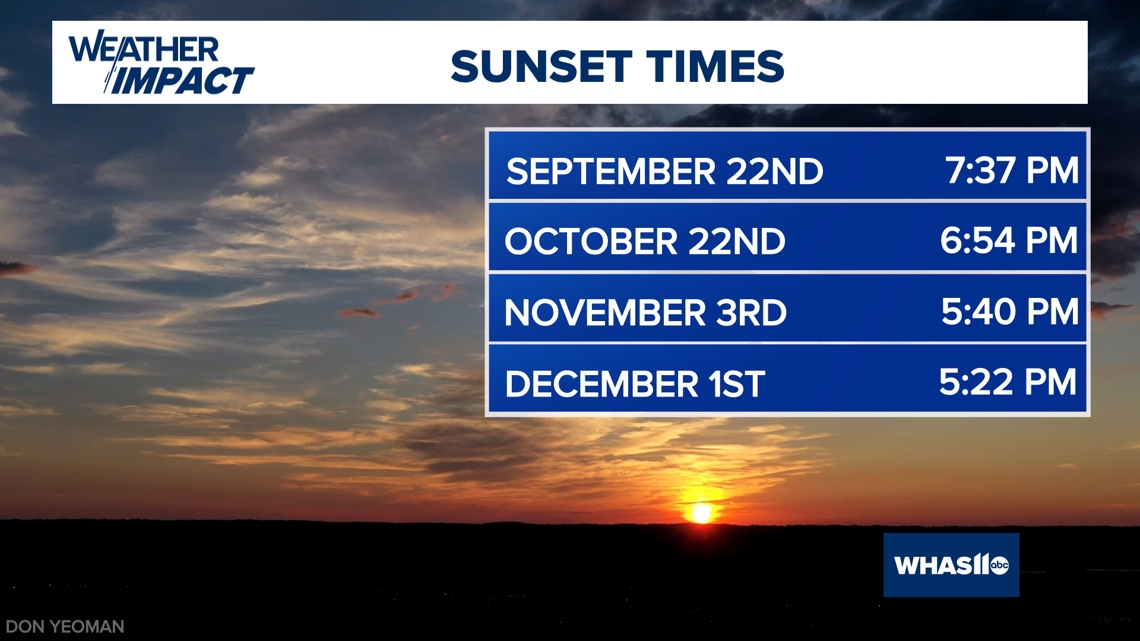
As we move through September and October the next change we feel are the gradually falling temperatures. September will often bless us with a few "fall fronts" or "false falls", where we get brief teases of the coming season's crisp and cool air.
Average or "normal" high temperatures drop to the 70s as fall begins, the 60s for highs by Oct. 19th, and the chillier 50s by November. The corresponding low temperatures also drop around the same time from the 50s, to the 40s, to the 30s. Brrr...!!!
FALL'S FALLING TEMPERATURES

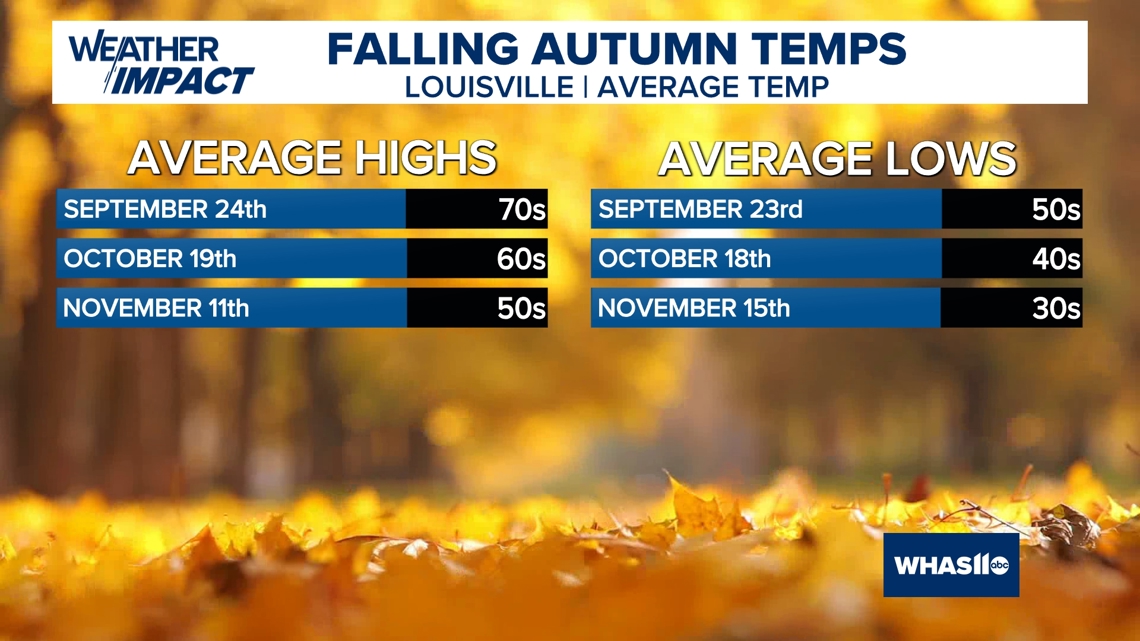
The next sense to see changes are our eyes as autumn brings a hope of brilliants colors. The famous fall foliage featuring vibrant red, yellow, and oranges. The fall foliage forecast can change depending on the character of the growing season through summer, and how wet or dry summer ends.
Drought can lead to a quick, and more colorless change, while a more generous moist season can lead to a longer-lasting and vibrant color through the season.
The fall colors definitely peak in October, and we usually see the vast majority of the leaves fall off by mid-late November.
FALL FOLIAGE FORECAST

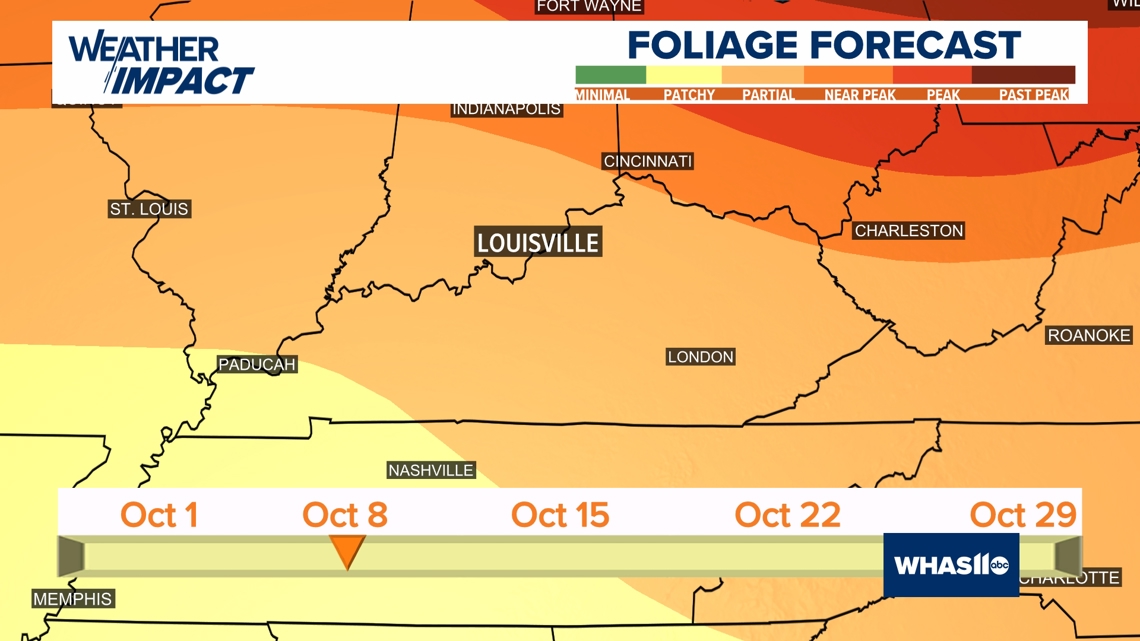

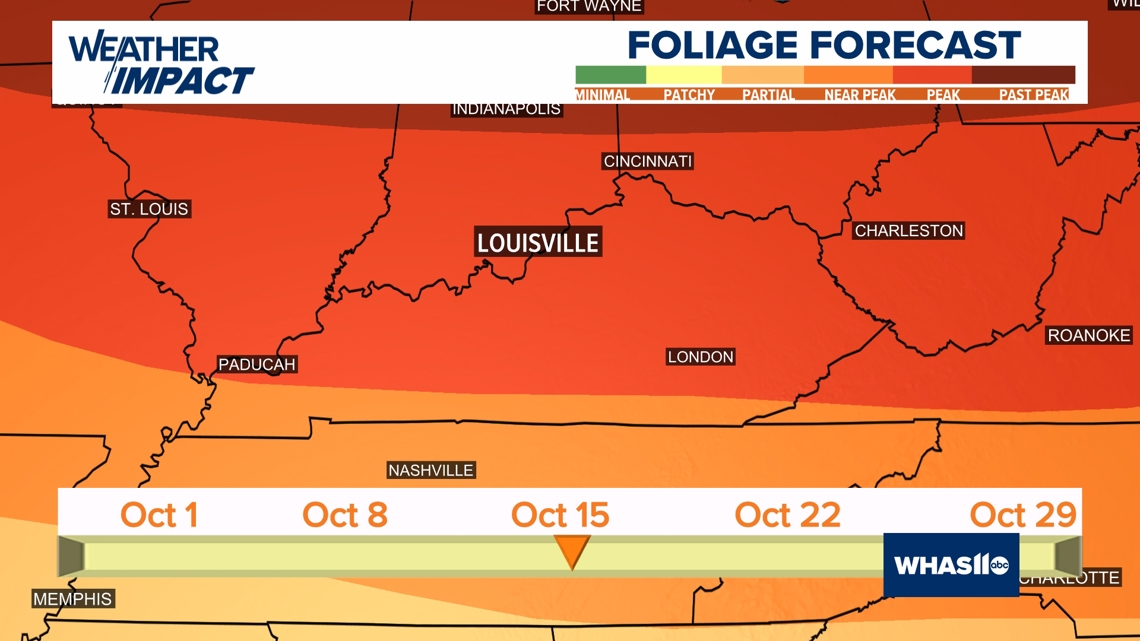

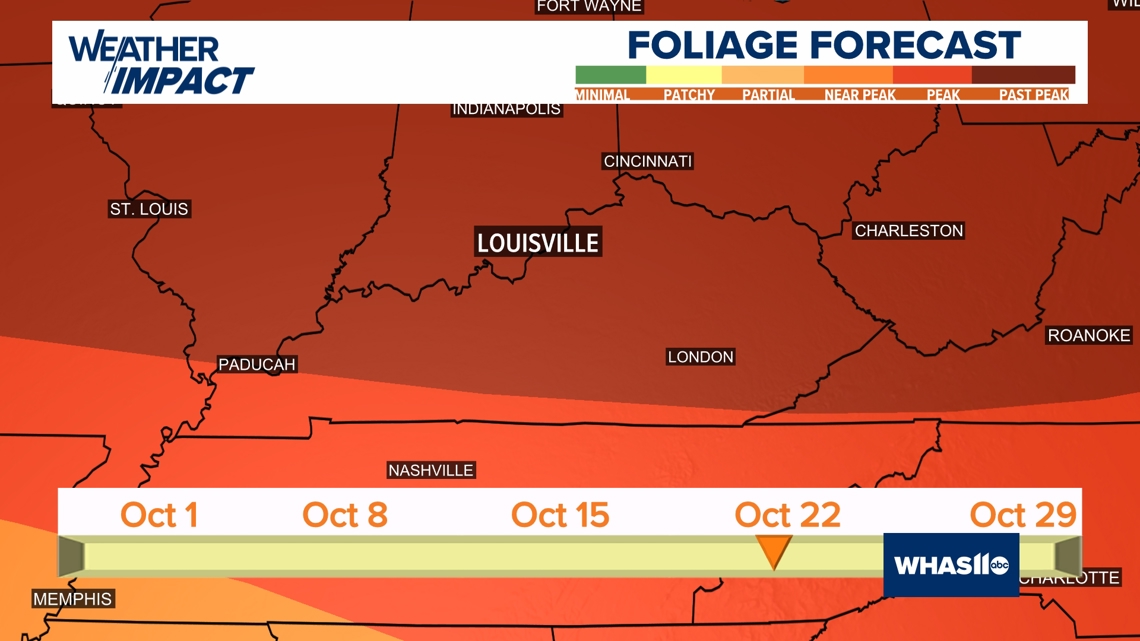


While fall does bring many things to look forward to, it also is the season of goodbyes. The end of the growing season marked by our first frosts and freezes. Allergy sufferers often welcome the frost and freeze, as this will also end the ragweed pollen season.
Our typical first frost is in late September or early October in the countryside, while it takes a bit longer until mid-late October for Metro Louisville to finally get frosty. A freeze happens when temperatures are a bit colder than a frost, typically at or below freezing, and this happens on average a bit later in the season.
The earliest frost happened on Sept. 25th, 1950, and the latest on Nov. 23rd, 1902. While the earliest hard freeze occurred on Oct. 10th, 1964, and the latest on Dec. 13th, 1939. Evidence that our fall season can be very different from year to year.
With the end of the growing season, watch for farmers harvesting their fields in October and November. Also watch out for the deer changing their behaviors with the rut season in November.
FIRST FROST
Earliest fall frost (36°): Sept. 25, 1950
Earliest fall freeze (32°): Oct. 3, 1974
Earliest fall hard freeze (28°): Oct. 10, 1964
Latest first fall frost (36°): Nov. 23, 1902
Latest first fall freeze (32°): Dec. 5, 1885
Latest first fall hard freeze (28°): Dec. 13, 1939

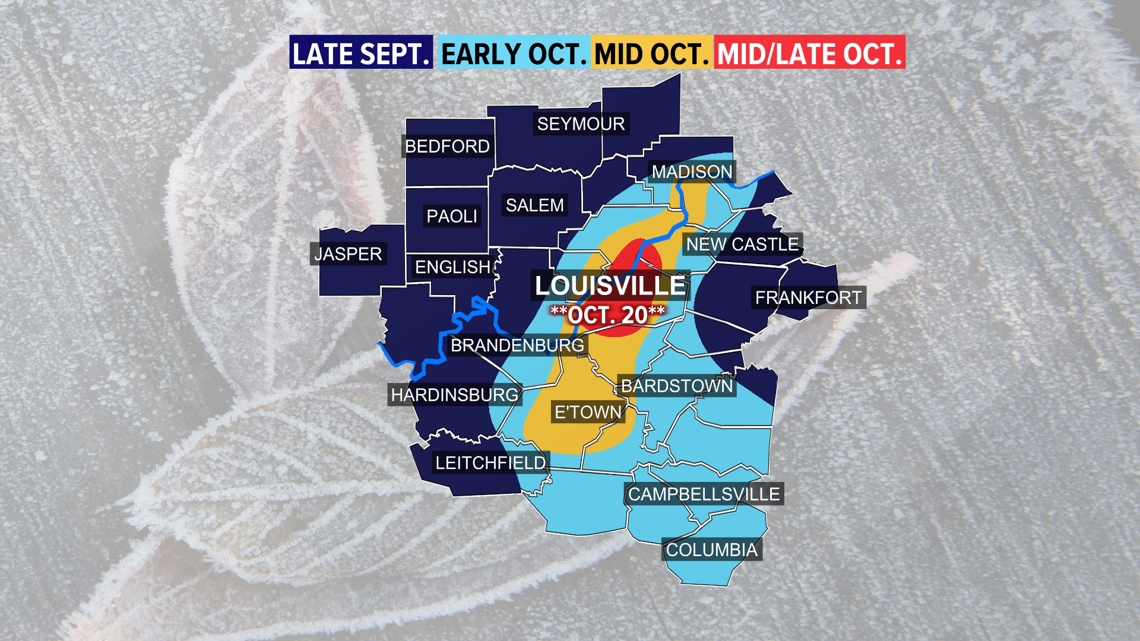


The last autumn sensation is SNOW! We typically have our first flurries around Nov. 15th, with the first measurable snowfall not until Dec. 6th (still fall). On average, we don't get our first inch of snow until after winter begins around Dec. 26th.
FIRST SNOWFALL

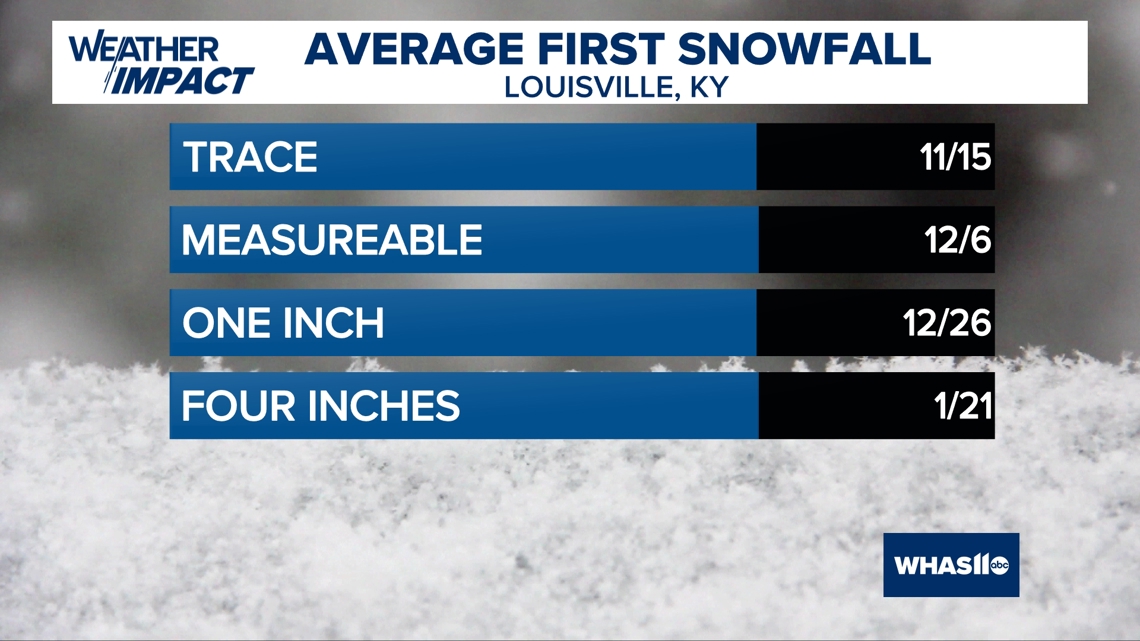
With all of this information, you are now more prepared to grab that pumpkin spice, flannel shirt, and get those backyard fires ready to go! Happy fall y'all!
Follow Chief Meteorologist Ben Pine on X, @WHAS11Ben, or Facebook or Instagram to stay weather aware.
Make it easy to keep up-to-date with more stories like this. Download the WHAS11 News app now. For Apple or Android users.
Have a news tip? Email assign@whas11.com, visit our Facebook page or Twitter feed.


